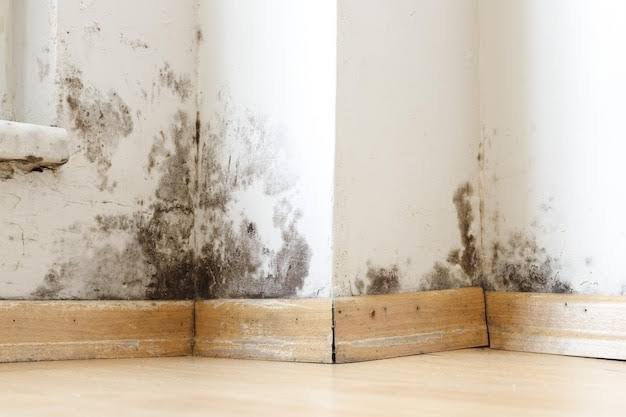One of the common problems identified is damp traditional homes is primarily resulting from specific construction methods and materials applied in older buildings. Dampness, whether its causes or effects, can only be controlled if one understands how damp arises in any building, and therefore, an understanding of the nature of dampness affecting traditional properties is imperative.
1. Types of Dampness
There are various kinds of damp that may affect traditional properties:
Rising Damp: This occurs when moisture from the ground rises through the walls by capillary action. Most frequently observed rising damp in old houses not having appropriate damp proof course (DPC).
Penetrating Damp: This one arises due to water penetrating into the house through the outer walls of the house, roofs, or windows. Caused due to inadequate roofing, broken brickwork, and bad gutters.
Condensation: Typically due to a lack of ventilation; moist warm air does not mix with cooler surfaces sufficiently to form droplets of water, and thus condenses. This normally occurs in kitchen and bathroom areas.
2. Sources of Dampness in Traditional Buildings
Traditional buildings are often composed of ‘moisture-retentive’ materials that suffer dampness more frequently as a consequence. Most common causes are:
Poor Drainage: Bad systems of drainage around the property contribute to water accumulation around the perimeter and beneath the foundation, which causes rising damp.
Poor Roofing: Damaged or missing tiles, bad flashing, etc. let the rainwater penetrate into your house and causes a variety of damp problems
Lack of Ventilation: Often, older houses are not provided with proper systems of modern ventilation, which causes moisture buildup, and problems by condensation in your house
Old Age of the Property: Many traditional materials made from stone, brick, and mortar break down with age, and consequently, make a house more susceptible to damp.
3. Moisture Warning Signs
The earlier the damp-related signs are detected, the higher are the chances of not letting things go worse. A few warning signs to look for are given below.
Mildew and Mold: These can be found on the walls, ceiling, and windowsill, more so on the masked wall sections in the room.
Peeling or Bubbling Paint: This indicates moisture has welled its way up into the surface from below.
Damp Smells: A musty smell usually confirms the presence of dampness or mildew.
Moist or Stained Walls: Moist patches or stains usually mean water penetration.
4. Damp Issues Not Treated
When damp issues are not treated, then it can lead to serious problems such as the following:
Structural Damage: High levels of dampness tend to crack or weaken walls or foundations; this is very costly to repair
Health Issues: Mold and mildew can become hazardous to the indoor air; such environmental conditions trigger respiratory issues and allergies.
Low Property Value: Dampness depresses the aesthetic value and worth of a property, hence becoming unattractive to potential buyers.
5. Cure Against Dampness
When coping with dampness in traditional homes, one is called to deal with it entirely:
Improvement of the Drainage System: Gutter and downspout should be correctly functioning. If possible, install a drainage system.
Roofing Correction: One ensures that there are no leakages of the water to the house by checking the roof constantly and maintaining it.
Install Damp-Proofing Measures: In case of suspected rising damp, there can be the application of the damp-proof membrane or damp-proofing cream in the walls.
Improve Ventilation: Install vents, extractor fans, or dehumidifiers to reduce moisture levels and ensure sufficient airflow.
Seek Expert Help: When damp in the house has reached an activity state beyond seeping control and level, you would have to seek a surveyor who is an expert or a damp specialist who can further diagnose for solutions tailored for it.
One of the major areas for concern in traditional houses is dampness. The good news is that with proper understanding and proactive steps, the problem can be handled pretty well, making its impact rather low. One can prevent or postpone further escalation of the problem by recognizing the signs, understanding the causes, and making effective solutions.

